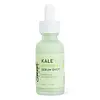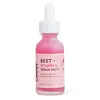What's inside
What's inside
 Key Ingredients
Key Ingredients

 Benefits
Benefits

 Concerns
Concerns

 Ingredients Side-by-side
Ingredients Side-by-side

Water
Skin ConditioningGlycerin
HumectantButylene Glycol
HumectantCeramide AP
Skin Conditioning1,2-Hexanediol
Skin ConditioningHydrogenated Poly(C6-14 Olefin)
EmollientCaprylic/Capric Triglyceride
MaskingTrehalose
HumectantLactobacillus/Brassica Oleracea Acephala Leaf Ferment Filtrate
EmollientSodium Hyaluronate
HumectantAloe Barbadensis Flower Extract
EmollientCurcuma Longa Root Extract
MaskingSolanum Melongena Fruit Extract
Skin ConditioningCorallina Officinalis Extract
Skin ConditioningPanthenol
Skin ConditioningTheobroma Cacao Seed Extract
AntioxidantMelia Azadirachta Leaf Extract
Skin ConditioningCoccinia Indica Fruit Extract
Skin ConditioningChondrus Crispus Extract
Skin ConditioningSaccharum Officinarum Extract
MoisturisingPolysorbate 60
EmulsifyingHydroxyethyl Acrylate/Sodium Acryloyldimethyl Taurate Copolymer
Emulsion StabilisingCaprylyl Glycol
EmollientCarbomer
Emulsion StabilisingSorbitan Sesquioleate
EmulsifyingTromethamine
BufferingEthylhexylglycerin
Skin ConditioningXanthan Gum
EmulsifyingSorbitan Isostearate
EmulsifyingOcimum Sanctum Leaf Extract
Skin ConditioningDisodium EDTA
Dextrin
AbsorbentLavandula Angustifolia Oil
MaskingWater, Glycerin, Butylene Glycol, Ceramide AP, 1,2-Hexanediol, Hydrogenated Poly(C6-14 Olefin), Caprylic/Capric Triglyceride, Trehalose, Lactobacillus/Brassica Oleracea Acephala Leaf Ferment Filtrate, Sodium Hyaluronate, Aloe Barbadensis Flower Extract, Curcuma Longa Root Extract, Solanum Melongena Fruit Extract, Corallina Officinalis Extract, Panthenol, Theobroma Cacao Seed Extract, Melia Azadirachta Leaf Extract, Coccinia Indica Fruit Extract, Chondrus Crispus Extract, Saccharum Officinarum Extract, Polysorbate 60, Hydroxyethyl Acrylate/Sodium Acryloyldimethyl Taurate Copolymer, Caprylyl Glycol, Carbomer, Sorbitan Sesquioleate, Tromethamine, Ethylhexylglycerin, Xanthan Gum, Sorbitan Isostearate, Ocimum Sanctum Leaf Extract, Disodium EDTA, Dextrin, Lavandula Angustifolia Oil
Water
Skin ConditioningButylene Glycol
HumectantGlycerin
HumectantGlycereth-26
HumectantPropanediol
SolventMethyl Gluceth-10
EmulsifyingPentylene Glycol
Skin ConditioningTriethylhexanoin
MaskingXylitol
HumectantBeta Vulgaris Root Extract
Skin ConditioningChondrus Crispus Extract
Skin ConditioningHydrolyzed Jojoba Esters
Skin ConditioningTheobroma Cacao Seed Extract
AntioxidantHippophae Rhamnoides Fruit Extract
Skin ConditioningGlycine Soja Oil
EmollientRetinol
Skin ConditioningAmmonium Acryloyldimethyltaurate/Vp Copolymer
Choleth-24
EmulsifyingHydrogenated Lecithin
EmulsifyingSaccharum Officinarum Extract
MoisturisingXylitylglucoside
HumectantCarbomer
Emulsion StabilisingAnhydroxylitol
HumectantTromethamine
BufferingXanthan Gum
EmulsifyingEthylhexylglycerin
Skin ConditioningGlucose
HumectantCyanocobalamin
Skin ConditioningDextrin
AbsorbentCeramide AP
Skin Conditioning1,2-Hexanediol
Skin ConditioningMethylpropanediol
SolventLavandula Angustifolia Oil
MaskingWater, Butylene Glycol, Glycerin, Glycereth-26, Propanediol, Methyl Gluceth-10, Pentylene Glycol, Triethylhexanoin, Xylitol, Beta Vulgaris Root Extract, Chondrus Crispus Extract, Hydrolyzed Jojoba Esters, Theobroma Cacao Seed Extract, Hippophae Rhamnoides Fruit Extract, Glycine Soja Oil, Retinol, Ammonium Acryloyldimethyltaurate/Vp Copolymer, Choleth-24, Hydrogenated Lecithin, Saccharum Officinarum Extract, Xylitylglucoside, Carbomer, Anhydroxylitol, Tromethamine, Xanthan Gum, Ethylhexylglycerin, Glucose, Cyanocobalamin, Dextrin, Ceramide AP, 1,2-Hexanediol, Methylpropanediol, Lavandula Angustifolia Oil
Ingredients Explained
These ingredients are found in both products.
Ingredients higher up in an ingredient list are typically present in a larger amount.
1,2-Hexanediol is a synthetic liquid and another multi-functional powerhouse.
It is a:
- Humectant, drawing moisture into the skin
- Emollient, helping to soften skin
- Solvent, dispersing and stabilizing formulas
- Preservative booster, enhancing the antimicrobial activity of other preservatives
Butylene Glycol (or BG) is used within cosmetic products for a few different reasons:
Overall, Butylene Glycol is a safe and well-rounded ingredient that works well with other ingredients.
Though this ingredient works well with most skin types, some people with sensitive skin may experience a reaction such as allergic rashes, closed comedones, or itchiness.
Learn more about Butylene GlycolCarbomer is a polymer of acrylic acid. Its main role is to create a gel consistency.
A high amount of carbomer can cause pilling or balling up of products. Don't worry, most products contain 1% or less of carbomer.
Ceramide AP is formally known as Ceramide 6.
Ceramides are intercellular lipids naturally found in our skin that bonds dead skin cells together to create a barrier. Having a strong skin barrier leads to more firm and hydrated skin.
They are known for their ability to hold water and thus are a great ingredient for dry skin. By bolstering the skin ceramides act as a barrier against irritating ingredients. This can help with inflammation as well.
If you would like to eat ceramides, sweet potatoes contain a small amount.
Read more about other common types of ceramides here:
Ceramide NP
Ceramide EOP
Chondrus Crispus Extract comes from a red algae native to the northern Atlantic coasts of Europe and North America. It helps hydrate the skin and is rich in antioxidants.
The antioxidants in chondrus crispus include lutein and zeaxanthin. Lutein has the ability to filter blue light from screens.
Other contents of chondrus crispus include polysaccharides, peptides, and amino acids. These help hydrate the skin.
What's the difference between algae and seaweed?
Algae is a broad term that includes seaweed. Not all algae is seaweed.
Dextrin is used to thicken a product and helps bind ingredients together. It is created from starch and glycogen.
As an emulsifier, dextrin prevents ingredients from separating. This helps elongate a product's shelf life.
Studies show coating UV filters with dextrin prevents these ingredients from being absorbed. This helps UV ingredients last longer on the skin.
Learn more about DextrinEthylhexylglycerin (we can't pronounce this either) is commonly used as a preservative and skin softener. It is derived from glyceryl.
You might see Ethylhexylglycerin often paired with other preservatives such as phenoxyethanol. Ethylhexylglycerin has been found to increase the effectiveness of these other preservatives.
Glycerin is already naturally found in your skin. It helps moisturize and protect your skin.
A study from 2016 found glycerin to be more effective as a humectant than AHAs and hyaluronic acid.
As a humectant, it helps the skin stay hydrated by pulling moisture to your skin. The low molecular weight of glycerin allows it to pull moisture into the deeper layers of your skin.
Hydrated skin improves your skin barrier; Your skin barrier helps protect against irritants and bacteria.
Glycerin has also been found to have antimicrobial and antiviral properties. Due to these properties, glycerin is often used in wound and burn treatments.
In cosmetics, glycerin is usually derived from plants such as soybean or palm. However, it can also be sourced from animals, such as tallow or animal fat.
This ingredient is organic, colorless, odorless, and non-toxic.
Glycerin is the name for this ingredient in American English. British English uses Glycerol/Glycerine.
Learn more about GlycerinLavandula Angustifolia Oil is more commonly known as lavender essential oil. It is considered a fragrancing ingredient.
Lavender imparts a famous scent. While the smell is lovely, this ingredient and may sensitize skin in topical products. This is because about 85% of the oil is made up of linalool and linalyl acetate.
When exposed to air, these two compounds become strong allergens. This ingredient exhibits cytotoxicity at low concentrations; amounts of 0.25% have been shown to damage skin cells.
A study from Japan found this ingredient caused lavender sensitivity after widespread exposure.
Lavender essential oil has some antimicrobial, antibacterial, and anti-inflammatory properties. However, the cons of this ingredient may outweight the pros.
More research is needed to confirm lavender essential oil's effects when used in aromatherapy.
Lavandula Angustifolia is known as the English Lavender and famous for creating purple fields in Provence, France.
Learn more about Lavandula Angustifolia OilThis ingredient is also called sugarcane extract. It is a moisturizing humectant and has skin soothing properties.
Similar to hyaluronic acid, sugarcane can attract moisture to your skin.
Glycolic acid is a derivative of sugarcane. While glycolic acid is an AHA with exfoliating properties, sugarcane is not an AHA.
A study from 2021 found the compounds in sugarcane extract to have antioxidant, antimicrobial, and anti-inflammatory activity. The study also suggests these compounds can inhibit skin ageing enzymes and promote collagen synthesis.
Learn more about Saccharum Officinarum ExtractTheobroma Cacao Seed Extract comes from the Theobroma cacoa, or Cacao tree. Cacao trees are native to tropical landscapes.
Cacao seed extract contains antioxidants known as polyphenols.
Tromethamine helps balance the pH and improve the texture of a product. It is synthetically created.
As an emulsifier, Tromethamine prevents oil and water ingredients from separating. This helps stabilize the product and elongate a product's shelf life. Tromethamine also makes a product thicker.
Tromethamine helps balance the pH level of a product. Normal pH level of skin is slightly acidic (~4.75-5.5). The acidity of our skin is maintained by our glands and skin biome. Being slightly acidic allows our skin to create an "acid mantle". This acid mantle is a thin barrier that protects our skin from bacteria and contaminants.
Oral Tromethanmine is an anti-inflammatory drug but plays the role of masking, adding fragrance, and/or balancing pH in skincare.
1,3-Propanediol, 2-amino-2-(hydroxymethyl)-
Learn more about TromethamineWater. It's the most common cosmetic ingredient of all. You'll usually see it at the top of ingredient lists, meaning that it makes up the largest part of the product.
So why is it so popular? Water most often acts as a solvent - this means that it helps dissolve other ingredients into the formulation.
You'll also recognize water as that liquid we all need to stay alive. If you see this, drink a glass of water. Stay hydrated!
Learn more about WaterXanthan gum is used as a stabilizer and thickener within cosmetic products. It helps give products a sticky, thick feeling - preventing them from being too runny.
On the technical side of things, xanthan gum is a polysaccharide - a combination consisting of multiple sugar molecules bonded together.
Xanthan gum is a pretty common and great ingredient. It is a natural, non-toxic, non-irritating ingredient that is also commonly used in food products.
Learn more about Xanthan Gum